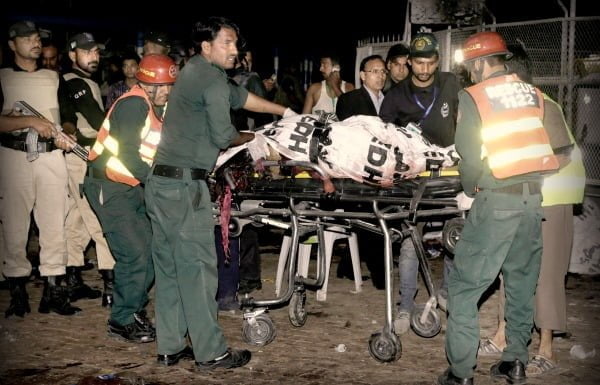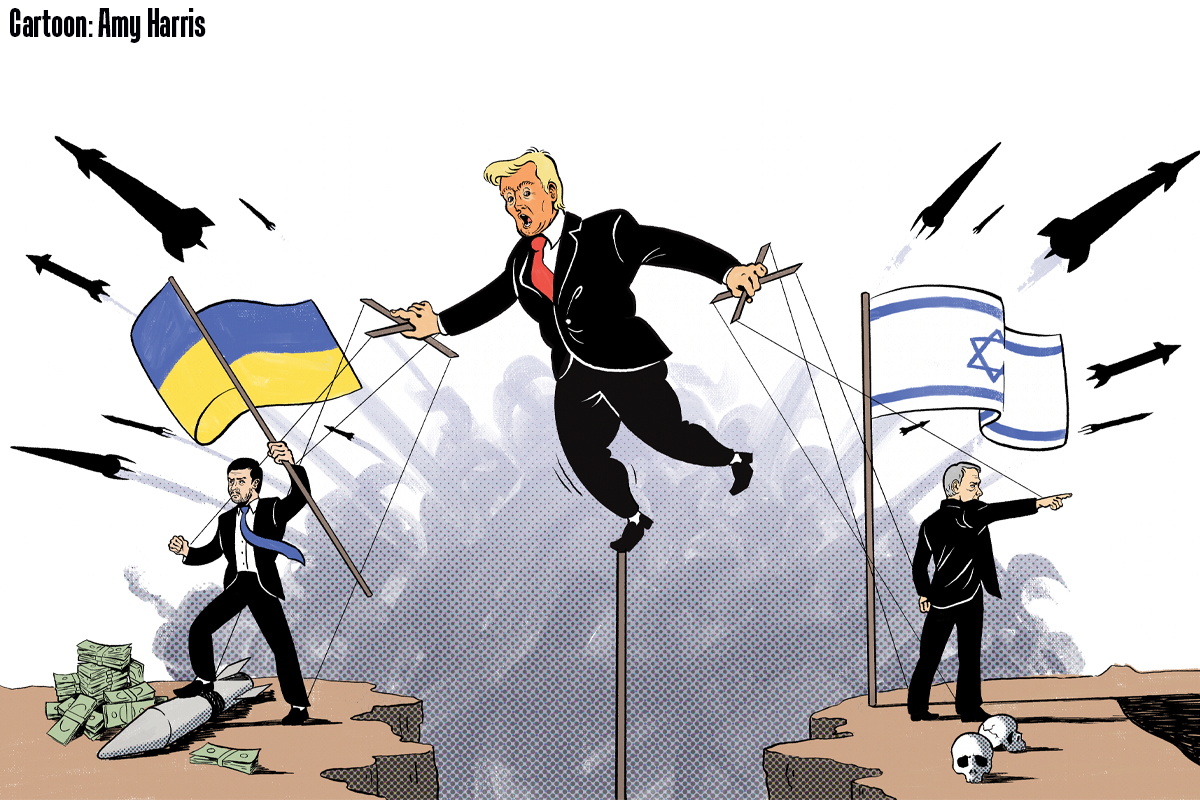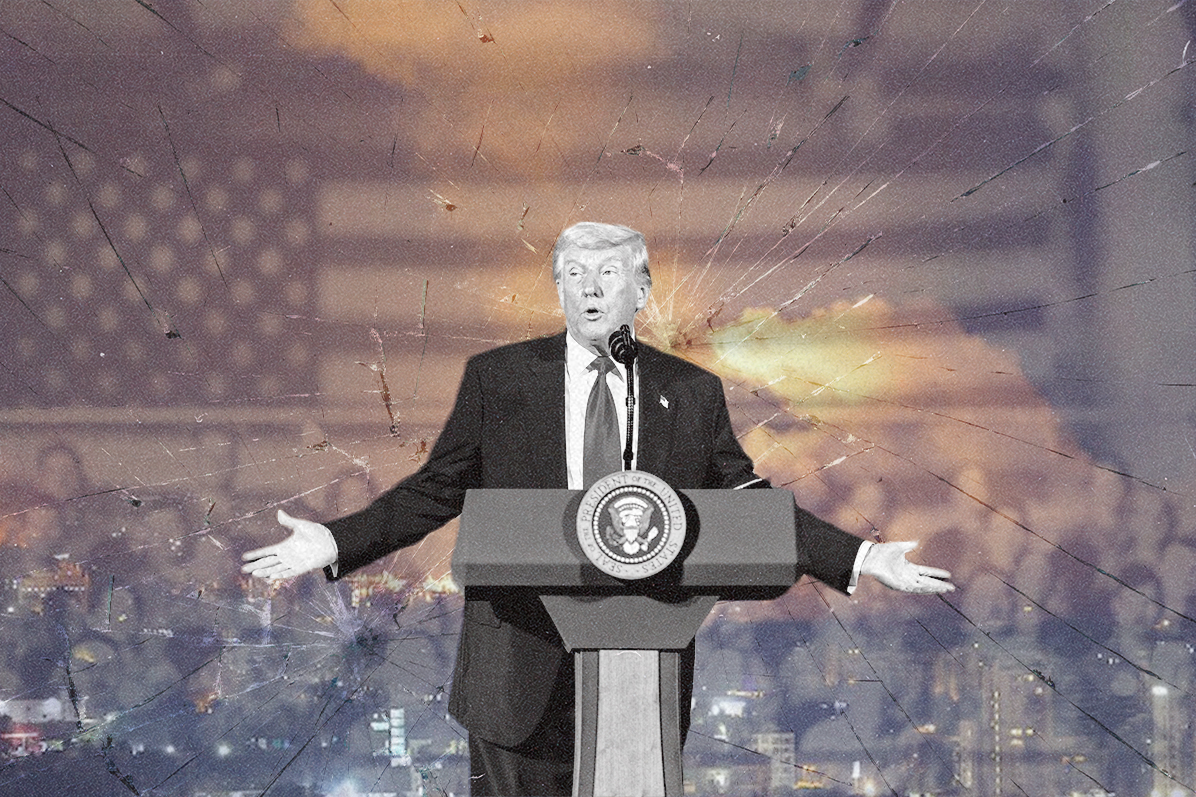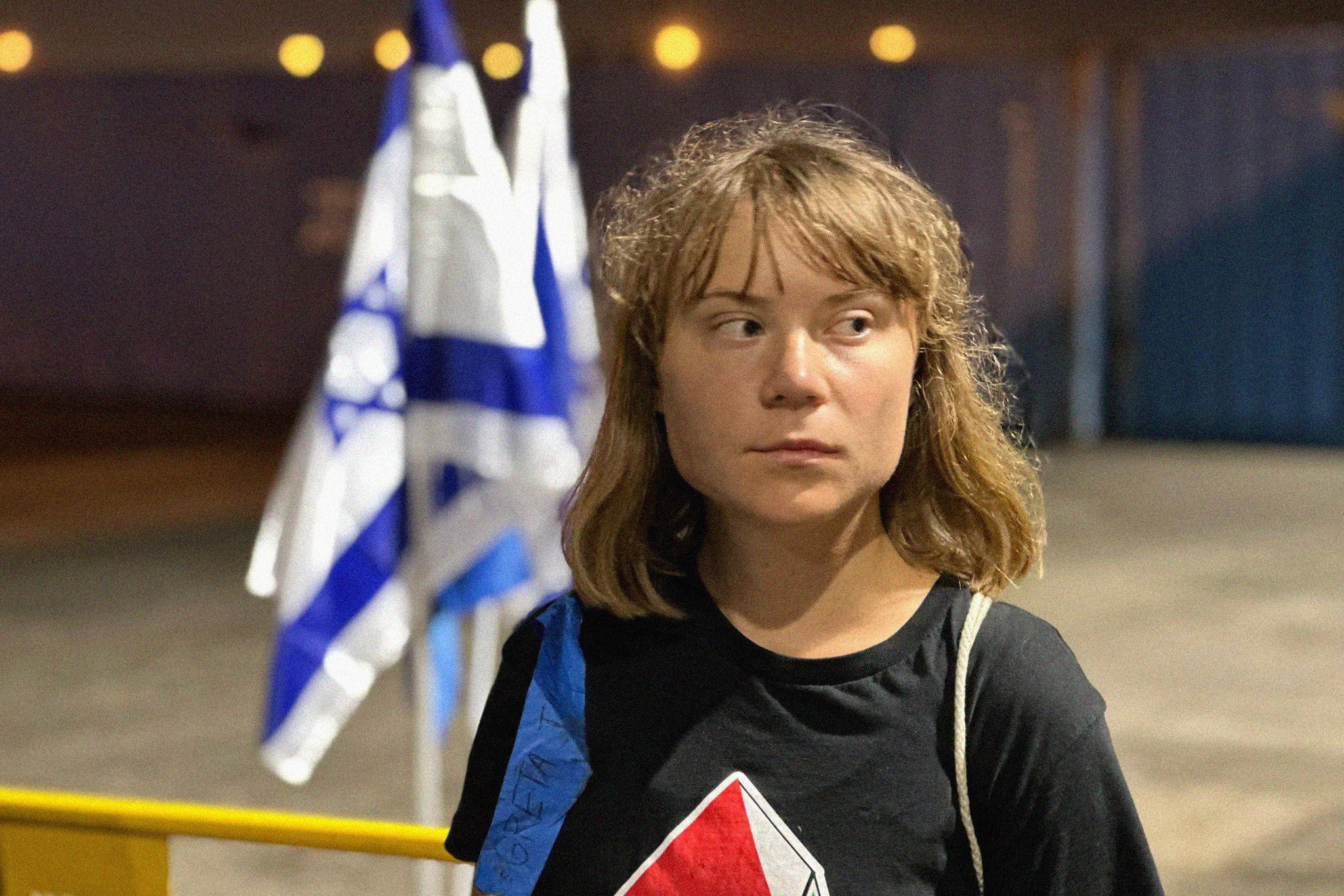On the evening of Sunday 28th March, a suicide bomber blew himself up in a children’s park in Lahore, Pakistan. At least 72 deaths have so far been confirmed and more than 250 are reported injured. This is yet another in the series of terrorist attacks continuing in this “land of the pure” in recent years.
On the evening of Sunday 28th March, a suicide bomber blew himself up in a children’s park in Lahore, Pakistan. At least 72 deaths have so far been confirmed and more than 250 are reported injured. This is yet another in the series of terrorist attacks continuing in this “land of the pure” in recent years.
This time the victims of this brutality were women and children enjoying their holiday in Gulhan-e-Iqbal Park. The suicide bomber blew himself up at the exit gate near the swings where children play. He targeted the largest crowd in the park. As it was also Easter Sunday, when many Christian families, who are a tiny minority in Pakistan and are one of the poorest and underprivileged layers, had come for a day out. This park is one of few recreation spot for working class families, as the spaces for such enjoyment are becoming less and less available due to the increasing ferociousness of the land grabbers.
After this attack, the bourgeois media once again have raised their “sensational” news stories and all TV channels have been trying to sell this morbid brutality for as high a price as they could. As usual, politicians have been sending their statements of condemnation and later “high level” meetings were also called by the Army Chief and Prime Minister Nawaz Sharif. The Army Chief has also given the go ahead to an operation against terrorists in the Punjab. Analysts and Columnists once again appeared on the TV talk shows cursing the lack of security at the park and the inefficiency of local security officials. The parties in opposition used this opportunity to attack the inability of the government to run its affairs and were demanding an enquiry into the incident. Many “serious” analysts have tried to explain the history of fundamentalism in this country while “appreciating” the role of the Army in the fight against terrorism. Statements of condemnation of this incident have also been coming in from the leaders of other countries of the world.
This has become a normal practice after such incidents in Pakistan, and nothing is new for the people watching the pools of blood, the injured carried to ambulances and the family members of victims wailing and crying on the TV screens. But the working masses of this country are fed up with this gimmickry of the politicians and the State authorities. These attacks of reactionary fundamentalist forces against innocent victims are fomenting more anger and fury against this religious bigotry. All this adds to the anger and fury over the already difficult living conditions, in which the essential needs of existence are becoming ever more expensive by the day.
More security?
The rallying cry of all political leaders, army generals and so called intellectuals of this country after every such incident is to call for increased security. After this latest brutal incident it is now being said that there were no cameras in the park and security at the gates was not sufficient. Also, the Army Chief has resolved to pursue the National Action Plan more forcefully and eradicate this menace of terrorism from the country.
This National Action Plan was devised after the brutal terrorist attack on the Army Public School in Peshawar on 16 December 2014, when more than 130 were killed, including school students, most of whom were children of Army officers. Since then this plan has been touted as the principal stance by the State Authorities and it is being spread throughout the media that the Army Chief is determined to put an end to terrorism in the country.
However, despite all these claims and superficial efforts, terrorism raises its head regularly and shatters all these hollow slogans time and again. In a recent attack at the Bacha Khan University in January, when terrorists entered the campus in the early morning, it was claimed by some that the security agencies had failed. But the Army spokesperson replied that the Pakistani security agencies are the best in the world and cannot fail, and that the terrorists could only enter the university due to the presence of heavy fog in the morning. If there had been no fog our security would have been perfect!
It is abundantly obvious that increasing security at every park, bus stand and market cannot guarantee the end of terrorism. Also, cameras and security officials cannot be placed at every nook and corner of the whole country. For the police mind, devoid of any basic political common sense, to end crimes the only thing required is to have more police forces out than criminals. But this is just a mockery aimed at calming the infuriated masses and evading the responsibility of government officials. In fact, after every such incident and with the hype of increased security, billions of rupees of public money are doled out in contracts for security arrangements. Subsequently, these incidents become a source of profit for the companies involved in providing security personnel and equipment. Politicians and state officials, including top generals, benefit from the kickbacks and commissions in these contracts. Every shopkeeper in the country has been asked to manage his own security. Every private housing society, educational institution and department has its own security personnel. It goes without saying that security companies, mostly run by retired army officers, are swimming in huge profits everywhere thanks to these terrorist attacks.
Most important of all, however, is the fact that the state uses this excuse to curb any kind of political activity and dissent on the part of the masses. After the incident at the Army Public School in Peshawar there was a student movement developing throughout the whole country and students were already coming out in protest against this act of brutality, but under the pretext of security and threats of terrorism all educational institutions in the country were closed down for three weeks. Later they were opened with heightened security and barbed wire on every wall. Later in 2015 the pressure of the student movement again spilled out and student protests were increasing on different campuses against the university authorities. Especially in Peshawar University, a movement against privatization and fee hikes was gaining ground. At the beginning of this year, in January, a terrorist attack at the Bach Khan University in Charsadda near Peshawar provided the State with the excuse once again to curb all kinds of political activity on campuses across the country. All educational institutions in the country were closed down for many days. When they were reopened security had been much enhanced. Students of one hostel are now not allowed to enter another hostel. No gatherings of students are allowed. Identity cards are checked at every entry point of the hostels and faculties and even in the classrooms. An atmosphere of fear and intimidation prevails on all campuses, and students are threatened with strict disciplinary measures if they express any dissent. Student unions have in fact been banned for three decades and there is no platform left through which students can express their views. On top of all this, the increased expenditure on security and other things are added on to student fees, as the government is rapidly cutting the already small budget on health and education spending.
In recent years it has been seen many times how these terrorist activities have been used to threaten the masses involved in political activity. When Benazir Bhutto arrived in Pakistan after her self-exile of many years on 18 October 2007, hundreds of thousands of people came out to welcome her. She herself was astonished to see this unexpected mass of people at Karachi airport. That movement was cut across by the deadly suicide attacks which left more than 150 dead and hundreds injured. The public meeting, which could have gathered more than two million people, was then called off. Benazir Bhutto was later assassinated on 27 December of the same year which cut across a mass movement gathering around her.
A method in this madness?
In recent years we have seen many instances in which these terrorist attacks occur at regular intervals to hold the masses back from any political activity. This forces us to ask the question as to whether there is any method behind this madness? A common argument about this menace is that the Frankenstein’s monster of Islamic fundamentalism – built up by the Pakistani ISI and military and sponsored by the American CIA during the Afghan Jihad against the Soviet invasion – has gone out of control and is now haunting its own masters. However, it is also true that that without overt and covert support by factions within the Pakistani State and by other imperialist powers, this could not continue any further.
The Pakistani State, more divided today than it was in the 1980s, is increasingly fighting with itself over the loot and plunder of the resources of this land. The huge influx of black money from the heroin trade, illegal gun running and other smuggled goods, is also a source of conflict among these warring factions. This leads to attacks of one faction against another through proxies in the guise of Islamic fundamentalists of one or other variety.
The terrorist attack on the headquarters of the Pakistan Army in Rawalpindi and other similar attempts against different strategic state assets can be viewed as part of this factional struggle inside the State. People, however, could also see how there were no terrorist attacks against mass gatherings and sit-ins of the right-wing PTI in Islamabad which continued for several months. Along with this phenomenon of the serious strategists pulling the strings of these terrorists for their own vested interests, these groups also have their own limited independent movements which sometimes clash with the interests of their masters.
There are also other aspects in this puzzle which sees various imperialist powers getting involved in this gory scenario, using these elements to promote their own strategic interests. As Al Qaeda was used as a pretext to invade Iraq, similarly these terrorist groups are needed to continue justifying the sale of drones and other military equipment to the US and other armies. All these parts of the puzzle should be joined together to find the strategy behind this madness. In the final analysis, the basis of all this is the capitalist system which in its epoch of senile decay has nothing to offer but carnage, bloodshed and suffering.
The recent escalation of violence and the ferocious intensity of the ongoing civil wars in the Middle East have also added fuel to the fire. The Saudi ruling class has always used the Pakistani state and Islamic fundamentalists as its stooges to influence the politics of the region. Thousands of madrassas in Pakistan are directly sponsored by the Saudi Monarchs and dozens of religious outfits get regular financial aid from their masters in Riyadh. Saudi Arabia was one of the first countries to acknowledge the Taliban government in Afghanistan back in 1996. They have continuously used these proxies ever since to further their interests.
Iran-US deal changes balance of forces
However, previously their friends in Washington had no problems about all this. But the recent turn of events in the Middle East and the closer ties between the Iranian Mullah regime and US imperialists has changed the balance of forces. It has thus become increasingly more difficult for a stooge like the Pakistani state to serve different masters at the same time.
Last week Iranian President Hassan Rouhani was in Pakistan and met with Prime Minister Nawaz Sharif and the Army Chief General Raheel Sharif. It was the first visit of an Iranian president since the lifting of sanctions against Iran. The purpose of the visit was stated as the strengthening of economic ties and the enhancing of trade relations between two countries.
This has definitely sent alarm bells ringing in Riyadh. The Saudis have already offered General Raheel Sharif to lead the thirty-four nation military coalition of Islamic countries recently compiled by Saudi Arabia. With the US imperialists now on the side of the Iranians and economic sanctions lifted, the Saudis and their proxies in Pakistan see their grip over the state loosening, the same state which they had sponsored massively in the past few decades, mainly through oil shipments with deferred payments.
They will thus try their level best to stop Iran from gaining influence inside Pakistan and will use their proxies to sabotage any such efforts. On the other hand, the Iranians are using official and unofficial means to gather support within the Pakistani establishment. They are also sponsoring Shia fundamentalist outfits in Pakistan to further their own interests. After visiting Pakistan, President Rouhani travelled to Delhi for an official visit to strengthen ties there. All this reveals a changed situation and balance of forces in the region which will sharpen the contradictions and bring to the fore new alliances and rivalries. Although, at the end of the day, it is the common people who suffer from the impacts of these imperialist manoeuvres.
However, the most important aspect of this situation is the general hatred of the masses in Pakistan towards these fundamentalists, despite all efforts to whip up support for these forces by various factions of the State. At the time of the Afghan Jihad in the 1980s these bigots found a fertile ground among some of the more primitive and reactionary sections of society. After the defeat of the revolution of 1968-69 and the fall of the Bhutto government, the whole of society was gripped by a counter-revolutionary wave. The seeds of all those barbaric forces which now haunt society were sown back then. Nawaz Sharif, the MQM, the various Islamic fundamentalists and right-wing forces were promoted by the Army Generals amidst the frenzy of the Afghan Jihad at that time which subsequently gathered support from the conservative elements of society. Although it is also true that we saw a class polarisation which was still very sharp and a strong resilience on the part of the working masses in the MRD movement and in the rise of the Benazir Bhutto led PPP in the late 1980s.
During all these years these political forces were put to the test time and again by the masses and brought to power, but they failed to deliver. In fact the agony of the masses and the difficulties of everyday life were ever increasing, which eventually led to a rejection of all these forces. Another option for the the State in Pakistan was that of using the Army. To “wipe out” corrupt politicians and bring everything into “order” the Army has stepped in many times in the 70-year history of this country. But then the incumbent Army generals themselves had to face the wrath of the masses because of their looting and plundering and again the same corrupt politicians who had previously been ousted once again would ride this wave of dissent with the rallying cry of the “restoration of democracy”.
Army and mainstream parties all discredited
At the moment the Army itself is not only torn apart by factional struggles and infighting, but it has also emerged as the largest land grabber in the country. Housing Societies for the elite set up by the Army are mushrooming in almost every city of the country. Also the the covert support for terrorists by sections of the Army is now an open secret. All this has left little room for the Army Generals to take over the reins from corrupt politicians, as they would have done in the past.
Apart from the impotence of the army generals, no political party in the country at the moment commands respect or authority among the people. Almost all parties are part of either federal or provincial governments and are involved in corruption and plunder from head to toe. Along with that there is no difference in their economic programme and all of them follow the dictates of the IMF and the World Bank in carrying out their policies.
In this situation some sections of the state have tried to prop up new populist parties through media campaigns and state sponsorships, but they have failed to attract support of any significant section of society. Imran Khan who initially attracted a large layer of students in the big cities, has now lost steam and is now stumbling from one gimmick to another. A new party in Karachi is being manufactured in an attempt to maintain the State’s control over the Urdu speaking masses of Karachi, but this also seems to be another flop.
In this situation terrorism becomes a key tool in the hands of the strategists of the State to keep the masses in check and whip up sectarian and religious hatred among the masses to divide and rule them. On the same day when this suicide blast occurred in Lahore, a few thousand mullahs had gathered in Rawalpindi to offer condolences for the hanging of the assassin, Mumtaz Qadri – who had killed a politician considered a “reformist” – and were even let loose and allowed to resort to rioting while entering the Red Zone in Islamabad. The latest news is that they are still continuing their sit-in in front of the Parliament House. All these incidents are used by State, with the media as an accomplice, to spread fear and intimidation among the masses and to keep them away from raising their demands.
It is an open secret that the working classes of Pakistan have never supported these tiny groups of fundamentalists and have waged relentless struggles against them time and again. At the moment there are hundreds of struggles of workers going on throughout the country for increased wages, better working conditions, against privatisations and other basic issues which are not highlighted by the bourgeois media. In all these struggles the workers fight against their bosses and the police on a class basis, putting aside any divisions on sectarian, nationalist, linguistic or religious lines.
All these scattered movements have yet to develop into a huge mass movement of the working class that will challenge this draconian state and its cruel terrorist proxies. This is what frightens the ruling classes and they are trying their level best to curb it through various means. The recent strike of the PIA workers which lasted for eight days was a glimpse of the times to come. Hundreds of workers closed down all operations and were united in their demand of an end to privatisation. This found an echo among the workers of the Railways, WAPDA and other sectors and the question of a general strike was objectively raised. The state resorted to repression and opened fire on the protesters killing two workers in Karachi. The same rulers who are now shedding crocodile tears over the killings yesterday in Lahore were the one who ordered this brutality in Karachi. More repressive measures are being prepared by these rulers to curb the masses in the future.
However, despite all these measures, the decay of the capitalist system cannot be averted and will lead to a sharpening of class contradictions in the coming period. These struggles will give rise to new forces on the right and the left, preparing class war. Only the victory of the working class in this epic struggle and the overthrow of the capitalist system will guarantee the end of terrorism and brutal killings once and for all.






